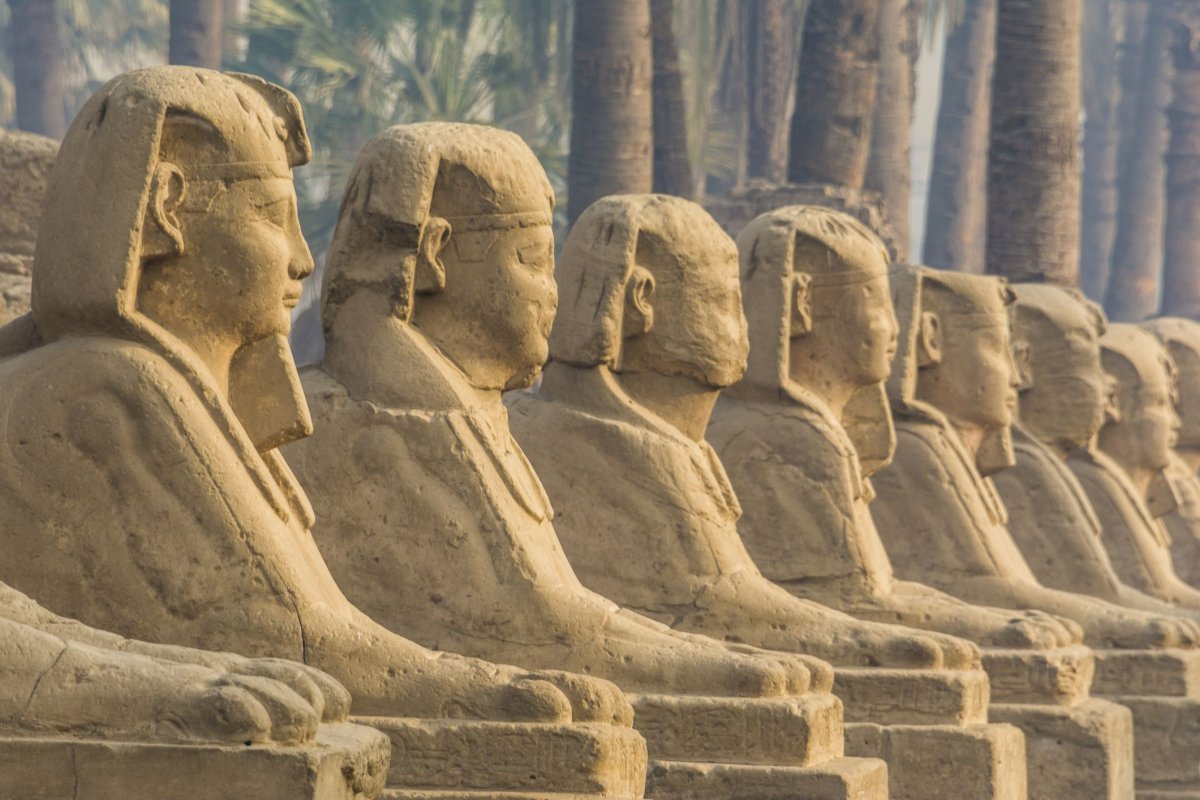Archaeologists have discovered a sphinx buried in Luxor in Egypt—the site of the ancient city of Thebes—Egypt Today has reported.
The newly uncovered sphinx is the latest treasure imparted by Luxor's ancient Al-Kabbash Road, much of which is lined with the magnificent stone creatures.

Al-Kabbash Road links the famous Luxor Temple to Karnak Temple—two vast and impressive centers built for the ancient god Amon, who was particularly revered in Thebes from about 2000 BCE.
The statue is pretty small compared to the famous Great Sphinx of Giza, which sits near the Great Pyramids of Giza. But what it lacks in size, it makes up for in company. The avenue of sphinxes and the temples it connects were originally home to more than 1,000 of the ancient mythological statues, The Independent reported back in 2010.
Sphinxes have the body of a lion and, often, the head of a human. But Al-Kabbash Road and the Karnak temple are also replete with ram-headed sphinxes.
These sphinxes are linked to Amon, who was at one point venerated as king of the gods. Amon's prowess faded amid political upheaval in Ancient Egypt, and the cults of Isis and Osiris eventually supplanted his own in the Greco-Roman world, Encyclopedia Britannica explains.

Egyptologist Bassam al-Shamma said the discovery of this sphinx statue was not a surprise, as there are so many similar sculptures in the region. Authorities are trying to figure out a safe way to extract this latest precious find from the ground.
A project to restore Al-Kabbash Road began in 2005. But 2011's Egyptian Revolution brought a halt to the activities. The $12.7 million project restarted in 2017 and officials expect to complete it by the end of 2018. Al-Kabbash's collection of sphinxes are being excavated, repaired and reinstalled, Egypt Today reported. Paving will make the treasure-lined road more accessible to tourists, authorities hope.
In other archaeological news, scientists recently discovered the heart of the Great Pyramid of Giza—the largest of three in the Giza complex—can concentrate electromagnetic energy. Whether or not its ancient owners knew of this strange ability is unclear.
Archaeologists recently opened a mysterious 2,000-year-old black sarcophagus that some feared held a curse. Rather than releasing an ancient spell, lifting the lid of the coffin revealed three skeletons and a lot of red-tinged sewage water. More than 30,000 people went on to sign an online petition to drink the putrid fluid. Probably created in jest, the petition reads, "we need to drink the red liquid from the cursed dark sarcophagus in the form of some sort of carbonated energy drink so we can assume its powers and finally die."
Uncommon Knowledge
Newsweek is committed to challenging conventional wisdom and finding connections in the search for common ground.
Newsweek is committed to challenging conventional wisdom and finding connections in the search for common ground.
About the writer
Katherine Hignett is a reporter based in London. She currently covers current affairs, health and science. Prior to joining Newsweek ... Read more
To read how Newsweek uses AI as a newsroom tool, Click here.








